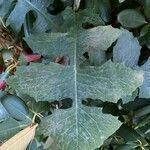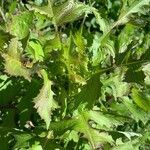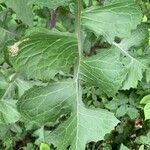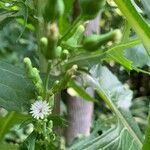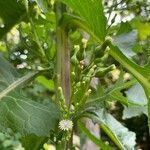Annuals or biennials, (15–)75–200(–300+) cm. Leaves on proximal 2/3–3/4 of each stem; blades of undivided cauline leaves ovate to lanceolate, margins entire or denticulate, midribs sometimes sparsely piloso-setose. Heads in paniculiform arrays. Involucres 7–12+ mm. Phyllaries usually reflexed in fruit. Florets (15–)20–30(–50+); corollas bluish or whitish, sometimes yellowish, seldom deliquescent. Cypselae: bodies brown (often mottled), ± compressed-ellipsoid, 4–5+ mm, beaks ± stout, 0.1–0.5+ mm, faces (4–)5–6-nerved; pappi ± fuscous, 4–6+ mm. 2n = 34.
A tall leafy herb. It has a taproot. There are leaves scattered along the stem. There are several flower heads. They are bluish.
